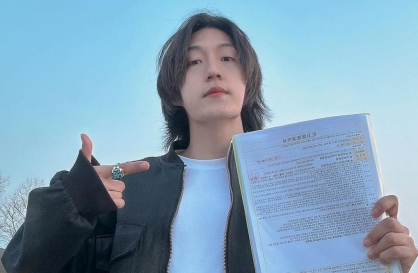[News Focus] Male 20-somethings far outstrip others in jobless rate
By Kim Yon-sePublished : July 25, 2021 - 23:55

SEJONG -- South Korean men in their 20s have the highest unemployment rate of all age and gender groups, government data shows.
According to Statistics Korea, the nation’s unemployment rate was 3.8 percent as of June with the number of jobless posting 1.09 million. This is compared to 3.4 percent and 940,000 unemployed people in December 2019, or a month before COVID-19 initially hit Korea.
Though the unemployment rate -- which showed a spike in the wake of the pandemic between 2020 and early 2021 -- has somewhat stabilized, the figure was still quite high among male Koreans in their 20s at 9.9 percent.
This far outstripped the 2.6 percent among men in their 30s, 2.4 percent among men in their 40s, 2.6 percent among men in their 50s and 3.9 percent among men aged 60 or over.
The rate for men in their 20s was also 2 percentage points higher than women in the same age group at 7.9 percent in the corresponding month.
Women in their 30s posted a jobless rate of 3.6 percent, those in their 40s at 2.9 percent, those in their 50s at 3.3 percent and those aged 60 or over at 2.1 percent.
These figures are calculated in a conservative manner because the government regards most nonregular workers -- those who are hired as temporary or contract employees -- as employed.
The situation gets critical when the “underemployed” (or a large portion of nonregular workers) are classified as the “de facto” jobless, according to the Supplementary Index III for Employment, a different set of data by Statistics Korea.
The Index III refers to the extended-based or de facto jobless rate, which reflects underemployment as well as unemployment. People deemed to be among the jobless include temporary employees who work fewer than 36 hours a week and want to work more hours, as well as seasonal workers who are out of work for part of the year.
The de facto unemployment rate for young Koreans, both men and women aged between 15-29, reached 23.5 percent in June. This contrasted with the 8.9 percent in unemployment rate for the same age group.
This suggests that the de facto jobless rate for men in their 20s could practically approach 30 percent, though the official rate was 9.9 percent.
“It is irrefutable that COVID-19 dealt a severe blow to young jobseekers in particular. But the point is that high youth unemployment had never been resolved during the incumbent administration (which took office in 2017),” said a labor researcher in Seoul.
“Employers in the services industry, such as convenience stores and restaurants, usually prefer women to men when they hire part-timers or contract workers,” he said. “This could bring about higher jobless rate among males in their 20s than females in their 20s.”
But he stressed that the high rates in both young men and women could be ascribable to a drastic hike in minimum wage during the current administration, which has aggravated cost burden for small- and mid-sized business.
The de facto jobless rate for those aged 15-29 has never remained under 20 percent from May 2017, when President Moon Jae-in took office, to June 2021.
The figure -- which was 22.9 percent in May 2017 -- climbed to 23.2 percent in May 2018, 24.2 percent in May 2019 and 26.3 percent in May 2020. This indicates that youth unemployment has been getting worse over time, regardless of the pandemic.
In 2020, the Moon administration unveiled its plan to create 550,000 jobs in a 10 trillion won ($8.6 billion) plan using state funds.
But many online commenters appeared to be skeptical of the scheme: They anticipated that it would only create more nonregular jobs in the public sector and called it another abuse of taxpayer money.












![[Today’s K-pop] BTS pop-up event to come to Seoul](http://res.heraldm.com/phpwas/restmb_idxmake.php?idx=644&simg=/content/image/2024/04/17/20240417050734_0.jpg&u=)




![[KH Explains] Hyundai's full hybrid edge to pay off amid slow transition to pure EVs](http://res.heraldm.com/phpwas/restmb_idxmake.php?idx=652&simg=/content/image/2024/04/18/20240418050645_0.jpg&u=20240419100350)

![[Today’s K-pop] Zico drops snippet of collaboration with Jennie](http://res.heraldm.com/phpwas/restmb_idxmake.php?idx=642&simg=/content/image/2024/04/18/20240418050702_0.jpg&u=)